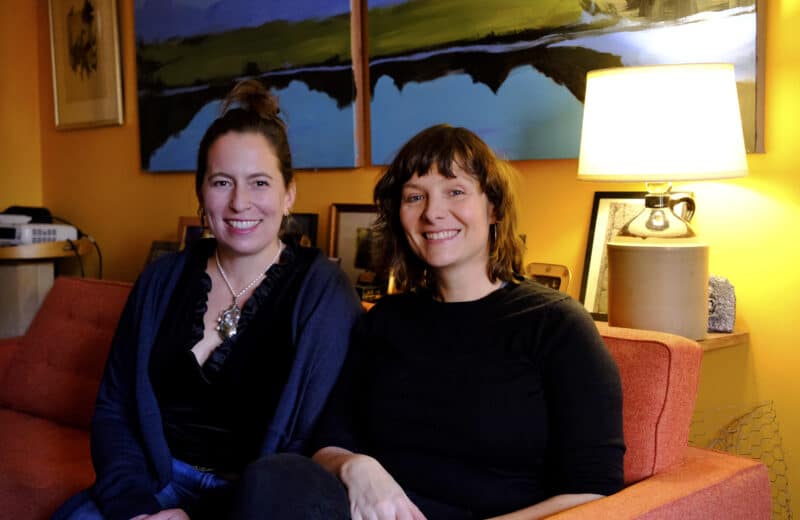Thanks to new treatments, many women are living longer with ovarian cancer
Aurora native Deanna Caudill, 46, was shocked to receive a diagnosis of stage 4 ovarian cancer in January 2018. “It threw me for a loop,” she says.
Caudill got two rounds of chemotherapy near her home in Lake Cormorant, Mississippi, where she worked as a supervisor in the FedEx Trade Network. Looking for a more comprehensive treatment, she traveled to Cancer Treatment Centers of America (CTCA) in Chicago for chemotherapy every three weeks, followed by extensive surgery and a new procedure involving heated chemotherapy delivered directly into her abdomen.
After the procedure, called Hyperthermic Intraperitoneal Chemotherapy (HIPEC), CT scans have shown no evidence of cancer. It’s been over a year. “I’m trying to get my energy back, but I’m doing really well,” she says. “It’s amazing how far they’ve come with this.”
Women with ovarian cancer have a tough road ahead of them. Only 20% of ovarian cancers are found at an early stage. If diagnosed and treated early, when the cancer is confined to the ovary, the five-year survival rate is over 90%. But the majority of women are diagnosed in late stages when the five-year survival rate is just 29%.
New treatment options
While the prognosis is not always rosy, treatments for ovarian cancer have improved. For women whose disease has recurred, maintenance treatments are providing new options to delay disease progression. And for women with a late-stage diagnosis, studies show better odds after cytoreductive surgery (removal of visible tumors and involved organs) followed by HIPEC to help increase length and quality of life.
While HIPEC offers some potential benefits, patients must balance the risks. The procedure can cause severe scarring of the internal organs. Also, HIPEC is listed in current guidelines as an approved option for the initial treatment of ovarian cancer but not as a treatment for recurrent ovarian cancer.
For HIPEC, the chemotherapy drug cisplatin is heated to about 108 degrees and delivered into the abdomen for 90 minutes. The high temperatures cause blood vessels to expand so the medicine can penetrate deeper, with fewer side effects since the drug doesn’t circulate throughout the body. Surgeons rock the patient back and forth on the operating table to ensure that the drug reaches all areas of the abdomen, killing any cancer cells that remain after surgery and reducing the risk of cancer recurrence.
“HIPEC is an ideal option for patients who have advanced ovarian cancer that has spread across much of the surface of the abdomen and is responding well to chemotherapy,” says Julian Schink, MD, chief medical officer of CTCA and chief of CTCA’s division of gynecologic oncology. “Three-quarters of women with ovarian or fallopian tube cancer have an internal spread at the time of the diagnosis, so it’s a suitable option for many of these women.”
A trial reported in the January 2018 New England Journal of Medicine showed that for women with stage 3 ovarian cancer, the addition of HIPEC to cytoreductive surgery resulted in longer recurrence-free survival and overall survival than surgery alone, and it did not result in more side effects. The median overall survival was 33.9 months in the surgery group and 45.7 months in the surgery-plus-HIPEC group.
“That’s a pretty remarkable improvement in overall survival,” Schink says.
For ovarian cancer recurrence, newer maintenance drugs — particularly the PARP inhibitors rucaparib (Rubraca), olaparib (Lynparza) and niraparib (Zejula) — can help, especially for women with BRCA gene mutations. These drugs block an enzyme that cancer cells use to repair themselves after being damaged by chemotherapy.
“These drugs are well tolerated by most women and are shown in multiple clinical trials to significantly delay the time to disease recurrence,” Schink says.
Facing ovarian cancer
Chicago writer and director Lucia Mauro found healing through filmmaking after her 2012 diagnosis of ovarian clear cell carcinoma stage 2b.
Four months of on-and-off bloating, fatigue, nausea and feeling full after eating a small amount of food — followed by more severe symptoms, including vomiting, fever and chills because the tumor had ruptured — led to her diagnosis at age 47.

“Cancer propelled me to follow my dreams. It gave me a sense of urgency,” says Mauro, who has written and directed four films. “[Filming] made me feel stronger. It allowed me to wrap my head around something creative that wasn’t tied to the hospital environment.”
Her film One Year Later is a semi-autobiographical story of an American woman “who doesn’t want to be defined by her illness” and takes a cathartic trip to the Italian Alps one year after completing cancer treatment to challenge herself and find her space. She has shown the film to support groups and at medical facilities across the country, with the goal of raising funds and awareness for ovarian cancer research.
Mauro has to keep on top of her condition, but she doesn’t do it with fear.
“I’m doing very well,” she says. “I go every four months for a CT scan and blood work. Ovarian cancer is something you learn to manage.”
Hope for the future
At UChicago Medicine, surgical oncologist Kiran Turaga, MD, offers hope to patients with ovarian cancer.
“We have opportunities for curing those folks if [the cancer] is not widespread,” he says. For others, “The goal is to try to manage it. For many it’s a chronic disease. You can live for a long time with a good quality of life. People are living longer even with recurrence.”
With new treatments, the outlook of ovarian cancer is changing.
“Women with stage 3 or 4 don’t always see it as a death sentence,” says Karen Young, manager of the Illinois Chapter of the National Ovarian Cancer Coalition. “There are a number of women who’ve been through two or more recurrences. Some are never out
of treatment, but we hear a lot about women being more hopeful. They see what’s happening in medical advances, and they think that what they’re going through will help maintain them until something else comes along.”












